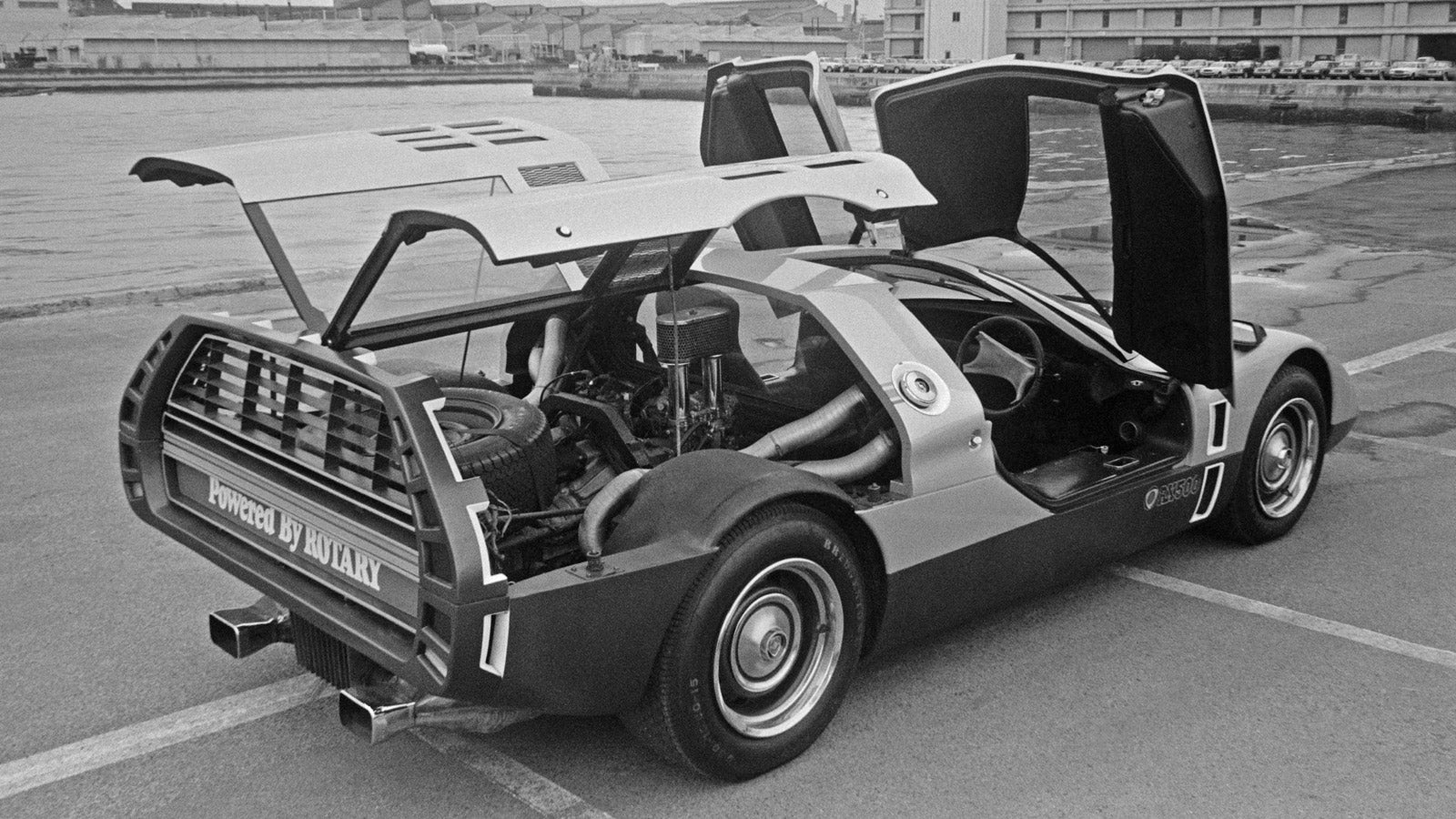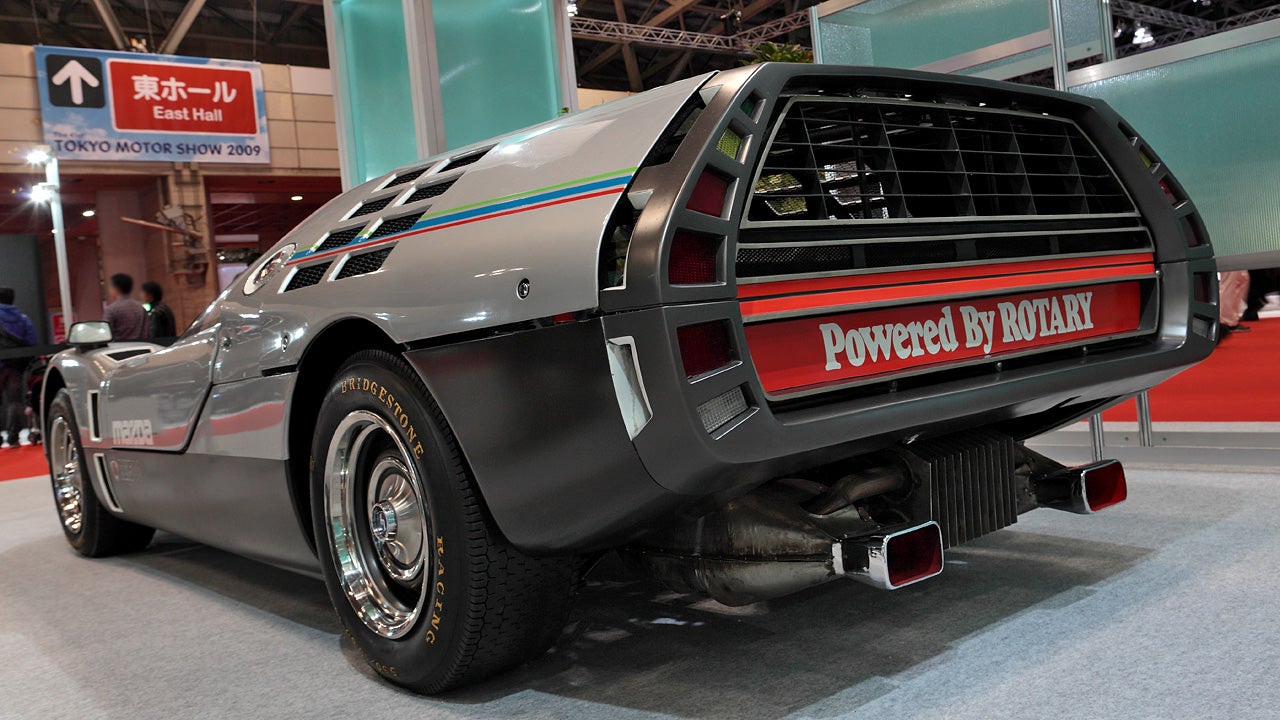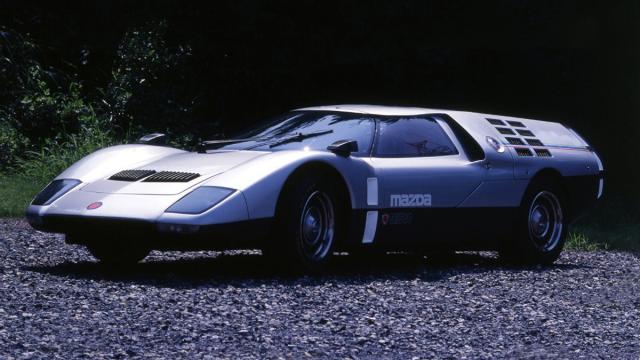The Mazda RX500 is one of those cars that doesn’t fail to leave an impression on anyone. It’s half a century old at this point, but still provokes double takes and wide-eyed, mouth-agape expressions. Even today, you don’t see many vehicles like it.
Today, the RX500 is remembered as a testbed for Mazda’s various emerging technologies at the time. There was the 491-cc twin-rotor powerplant behind the seats, capable of revving up to 14,000 rpm while delivering a very healthy 247 horsepower. It’s almost comical that such a large breadvan-style enclosure concealed a really tiny engine, but then the car’s silhouette was chosen more to minimise drag than conceal all the engineering within.
The bodywork also presented an opportunity for Mazda designer Shigenori Fukuda to apply ideas he’d picked up while working alongside Bertone — namely, a motif of subtle, curved surfaces rather than sharp lines. Without that influence, the RX500 might’ve morphed into something like the Dome Zero, more digital than organic.

The oil crisis ultimately prevented Mazda from pursuing the RX500 any further than the one example it made, though the concept’s legend continued for a short time after, thanks to a second life as a popular Matchbox diecast.
But what I really came to discuss today was a very specific aspect of the RX500’s design — its lighting situation, particularly at the back.
If you’re looking at the RX500 from the front or side, absolutely nothing could prepare you for what awaits you at the rear of the car. It’s defined by this rounded trapezoid marked by cascading lights on either side, a louvered space where you’d expect the rear glass of a hatch to be and a lower portion clad in red, festooned with the phrase “Powered by ROTARY,” written in a very ornate, era-appropriate font. It is every visual byword for technological achievement in the ’70s, muscling each other for attention in one space.

Then the multicoloured lights turn on, and all of a sudden the RX500 becomes a rolling pinball machine. The lamps progress from green to yellow to dark red as you follow them down. Driving the car in Gran Turismo Sport, I always assumed the gratuitous lights were there for show, like the text and all the red and that weird Polaroid camera-esque stripe cutting across the engine cover. But no — they, too, served a very important purpose, as Fukuda himself explained to Japanese arts and lifestyle publication, Pen:
“The image I had was to combine racing-car and aeroplane design. As you can see, there are quite a few aeroplane-like motifs in the car, such as the canopy, air outlets, and after burners. I also wanted to give the tail lamp a futuristic look. Although it wouldn’t be acceptable legally, the lights were originally set to turn yellow when braking started, red when the car was coming to a stop, and green when the car was gliding down the road normally at fast speeds. The idea of the tail came from the spaceship in the movie, 2001: A Space Odyssey. I wanted to make the car as unlike an automobile as I could.”
I’ve long wondered why automotive lighting didn’t progress more in the way Fukuda envisioned on the RX500. Yes, that particular behaviour — green for moving, yellow for slowing down and so on — would’ve been mighty distracting to follow and the information it’s communicating wouldn’t seem to be especially useful. But it’s interesting that for as long as cars have existed, we’ve had red lights for night/low visibility driving, braking and indicating turns, or sometimes amber lights for the latter purpose, depending on where you live. And that’s it!
It reminds me of the first time I went to the U.K. and noticed that the traffic lights there pause at yellow not just when progressing from green to red, but also in the opposite direction too, I assume as a warning to get in gear or prepare to accelerate. Cars can convey so much more information with lights than they currently do — something the RX500 demonstrated in a quirky fashion all the way back in 1970.
